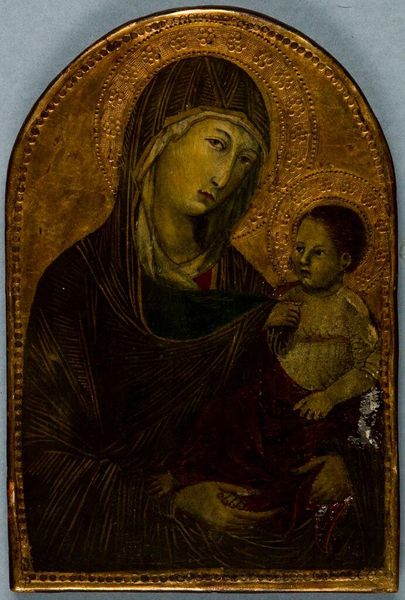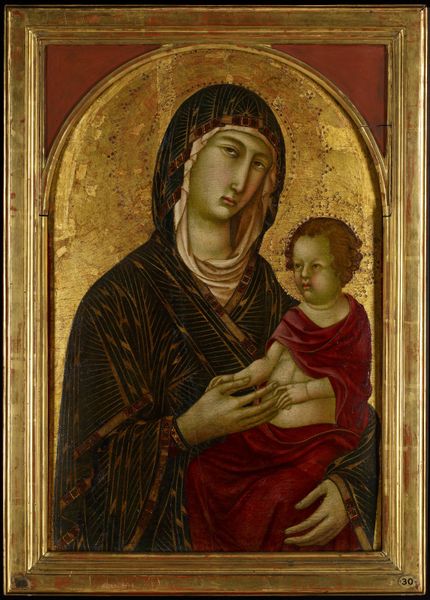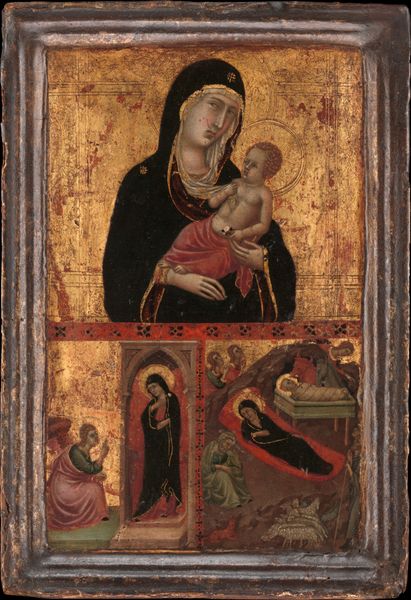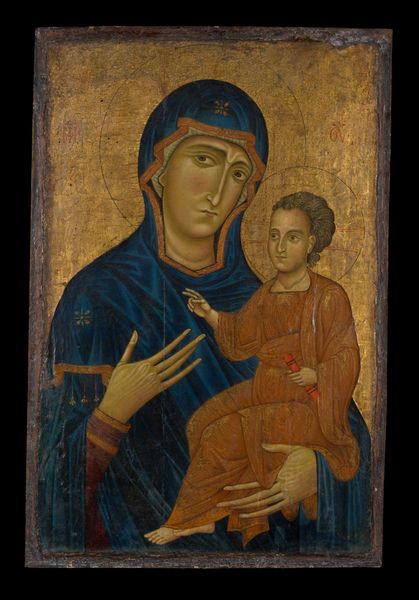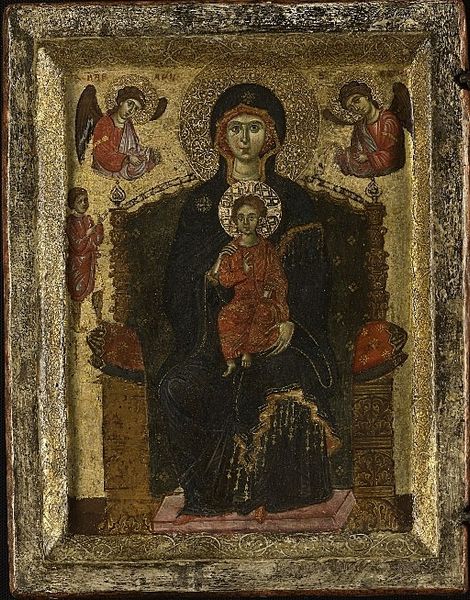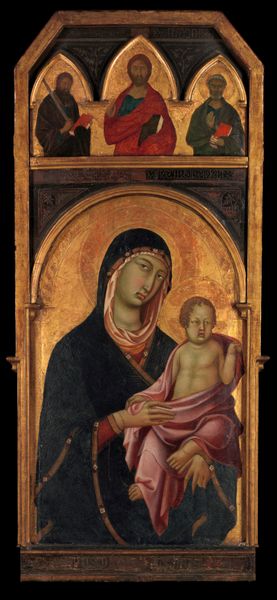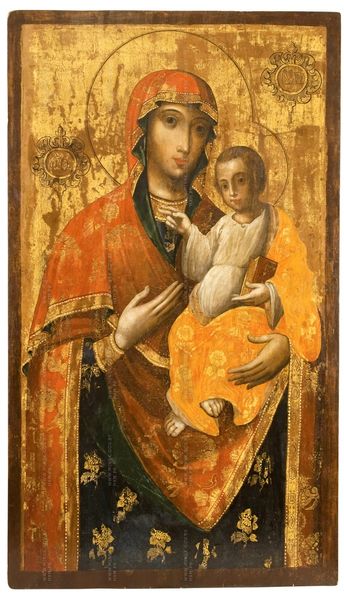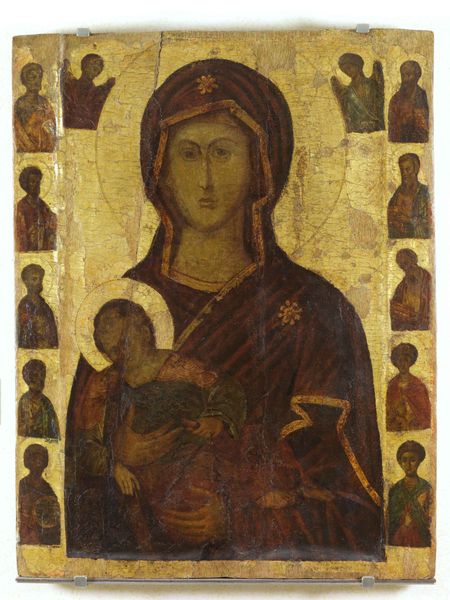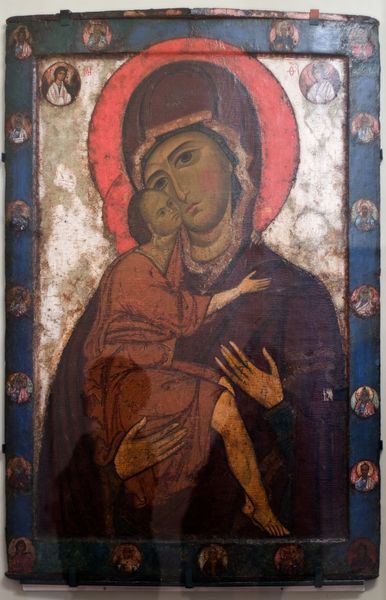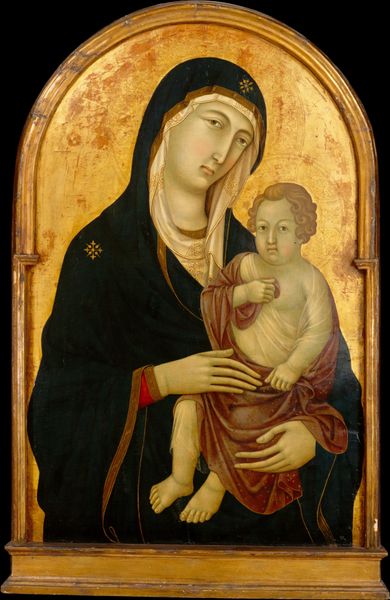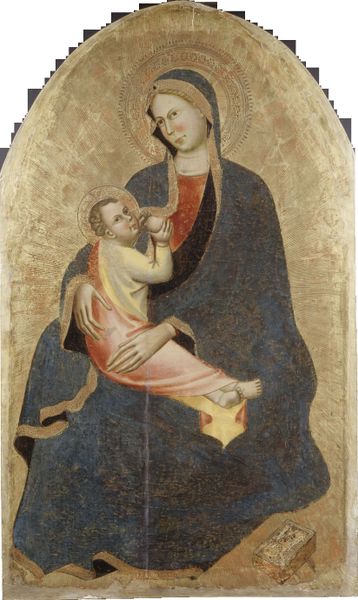
tempera, painting, wood
#
portrait
#
medieval
#
tempera
#
painting
#
figuration
#
oil painting
#
wood
#
portrait art
Dimensions: 88.3 cm (height) x 60.9 cm (width) (netto)
Curator: We're looking at "The Virgin and Child," a tempera on wood painting dating back to between 1305 and 1320, created by the Master from Citta di Castello. Editor: It strikes me immediately with its austerity, its gravity. The gold background lends it a sort of ethereal glow, but there's a distinct lack of sentimentality in the faces. Almost…iconic, but without warmth. Curator: Indeed. Tempera demanded precision; the application of pigment, usually egg-based, required meticulous layering. This process emphasizes form over painterly expression; what might appear to us now as stiffness was in part a consequence of technique. Consider also that these materials—gold leaf, precious pigments—weren't simply aesthetic choices but declarations of value, of labor, reflecting the commission's financial and devotional investment. Editor: Right, the cost must have been substantial. And the way the gold leaf has aged and cracked almost adds to the emotional weight somehow, like the passing of centuries etching themselves onto faith. The way the faces of the virgin and child aren’t soft or traditionally beautiful actually gives me a lot more to think about than a saccharine renaissance image, you know? I keep looking at it... It's more affecting than appealing. Curator: The use of such valuable materials was undoubtedly related to the status of the church for which the painting was created. In regards to the stiffness you notice, there are social reasons that also affected the means of production. Medieval workshops emphasized standardized depictions. Individual creativity wasn't the primary goal, more the execution of accepted forms, serving to visually solidify doctrine. Editor: I like that— solidify doctrine. I’d always attributed a certain feelinglessness of the faces with… just a less sensitive style, I suppose? But I never took it in such a socioeconomic context, or rather how closely connected faith was to a collective economic landscape. So it almost feels… incorrect, right, to seek personal expressiveness as we understand it, in a piece meant to serve community. Curator: Exactly, shifting the question to what purpose the piece of art was produced, for which demographic and to be presented for whom will drastically shift how one approaches analysis of art like this one. Editor: This was more beautiful, thoughtful, and even spiritual, I believe. It makes me feel so at peace now and appreciate even more art, craft, and the business surrounding this time.
Comments
statensmuseumforkunst almost 2 years ago
⋮
Here the Master of Cittá di Castello makes a traditional Byzantine Madonna ‘modern’ by giving the Virgin Mary a di-rect gaze and having her hold the infant Christ by the hand. At the same time the artist has retained typical Byzantine features such as Mary’s red robe, the stylised, linear facial features and the gold leaf ground. Seven hundred years have left their mark on the painting. The original Gothic architectural frame has disappeared, the round arch being the only surviving remnant. In several places the figures’ skin tones have disap-peared so that the green underpainting shows through, and there is extensive damage to the colour layer overall. This Virgin and Child presumably originally formed the central part of an altarpiece where it would be flanked by several other panels depicting apostles or saints.
Join the conversation
Join millions of artists and users on Artera today and experience the ultimate creative platform.
